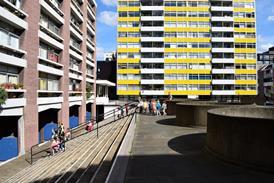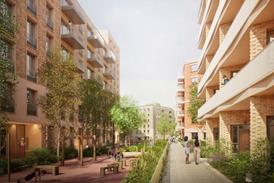Cities once led regional growth. Now they grow at the expense of their region, writes David Rudlin

Well it was at least a good election night in South Manchester. Our MP, Afzal Kahn, increased his majority to more than 30,000 and on election day it seems that every third house in our street was displaying a Labour poster. Looking at the world from our south Manchester bubble, and living our professional lives with others who live in similar bubbles (see Building Design’s survey of architects’ voting intentions), the election result can seem incomprehensible.
The papers have been full of analysis of the reasons for the result but few people have discussed the role of urbanism. In an article entitled How the Megacities of Europe stole a continent’s wealth for the Observer, written before the election, Julian Coman describes what’s happening. Writing largely about Milan, a city that is booming to an even greater extent than Manchester, he quotes a resident who told him: “It’s a kind of natural selection that goes on, creating a community which is much more European, open and tolerant in its mindset. Milan is not Italy.”
Milan’s skyline is bristling with towers and its economy is booming. Because of this, it attracts talented and ambitious young people from all over Europe who go to its universities and stay on to live and work in the city. This young educated workforce is a magnet for companies who relocate to the city to access this labour pool. The Centre for European Reform described this process in a report in May this year called the The Big European Sort? The Diverging Fortunes of Europe’s Regions. It describes a “sorting” of population and business as industrial production declines everywhere to be replaced by knowledge, tech and services that are concentrated in the larger cities.
The result is that cities like Milan and Manchester go from strength to strength by sucking the talent and investment out of all of the smaller cities and towns in the surrounding region. Whereas once cities led regional growth, they now grow at the expense of their region.
These large cities are not only far more affluent than their neighbouring cities, they are also more multi-cultural and tolerant. The Observer article describes how the Milanese Democratic party drew up a map of the Lombardy Region. It showed how constituencies in Milan, and anywhere with a fast transit connection into the city, tended to vote for the left while everywhere else voted for the right and increasingly for the far right. This explains my South Manchester bubble and the bubbles that can be found in other UK cities and, of course, the huge bubble over London, as any map of the Brexit vote and the general election reveals.
The problem when two places are connected is that the wealth tends to flow to the more affluent one, reinforcing the dominance of cities
The new government has been sending out messages since the election that it intends to invest in these “left behind towns”. However, as the Centre for European Reform report states, this presents a dilemma for policymakers: “Should they attempt to invest in areas in relative decline, to try to stem the outflow of highly skilled people and address the frustration of people ‘left behind’? Or should they invest more in skills, housing and transport to make it easier for people to move to successful cities? While the latter might lead to the largest productivity gains, it risks hardening Europe’s political fault-lines.”
We spent much of last year struggling with these issues as part of the Greater Manchester Spatial Framework that encompasses a conurbation including the booming cities of Manchester and Salford, the pressurised south of Trafford and Stockport and the northern towns of Wigan, Bolton, Bury, Rochdale, Oldham and Ashton.
In the election Labour held these northern towns, albeit with reduced majorities. Andy Burnham, as Greater Manchester mayor, is very much focused on how to spread the wealth being created at the centre to these northern towns through a combination of regeneration and investment in public transport. If successful it could be argued that these towns are being drawn into the metropolitan bubble, which doesn’t necessarily help more isolated places.
Whether such a strategy can be extended to the “Red Wall” constituencies that played such a prominent role in the election is another matter. The government might try and reverse economic trends that affect these places, but in doing so they will need to reverse economic trends that go wider than northern England. Or they might invest in transport to connect these towns to nearby cities. Yet, as the Independent Transport Commission has warned, the problem when two places are connected is that the wealth tends to flow to the more affluent one, reinforcing the dominance of cities.
These problems are not confined to the UK but are particularly acute because of our industrial past. Unless they are addressed they will affect our economy and our politics for generations.
















No comments yet